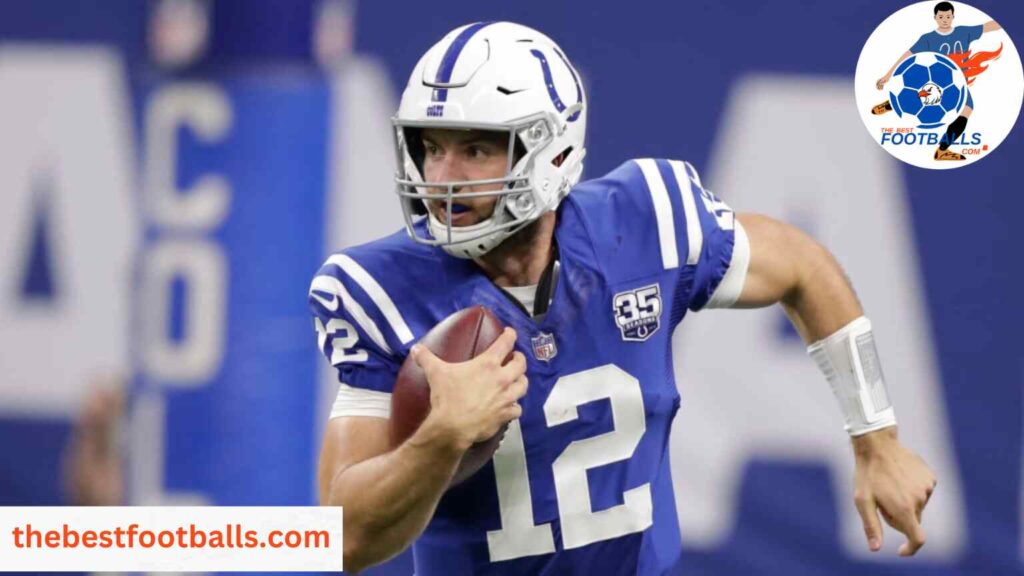In the world of professional sports, few stories are as bittersweet as that of Andrew Luck. A prodigious talent with immense potential, Luck’s football journey was marred by a series of injuries that would ultimately shape his career trajectory. From his college days as a standout at Stanford to his time in the NFL with the Indianapolis Colts, the impact of injuries on Luck’s career is a testament to the delicate balance between athletic prowess and physical vulnerability.
Early Brilliance: Rising Through the Ranks
Andrew Luck’s rise to prominence was anything but ordinary. Hailing from a football family, his journey began as a highly-touted high school prospect. He seamlessly transitioned to the college stage, where his skill set and football IQ made him a star at Stanford University. As injuries are an inevitable part of any sport, Luck’s early years were relatively injury-free, allowing him to showcase his talent and solidify his position as a top NFL prospect.
The NFL Dream: A Franchise’s Hopes Resting on His Shoulders
In 2012, the Indianapolis Colts made a franchise-altering decision by selecting Andrew Luck as the first overall pick in the NFL Draft. The move was seen as a changing of the guard, with Luck expected to fill the shoes of the legendary Peyton Manning. Impressive performances and a sense of promise marked the early years of his NFL career. However, the first signs of the injury struggles defining his journey were lurking beneath the surface.
The Injury Bug Bites: A Series of Setbacks

Luck’s first taste of significant injury adversity came in 2015 when a shoulder injury led to a missed season. What initially seemed like a temporary setback turned into a prolonged absence, raising concerns about his durability. A determined Luck battled back, displaying a resilience that endeared him to fans and teammates alike. Yet, his journey to recovery was far from over, as subsequent seasons would bring new challenges and unforeseen injuries.
A Pivotal Decision: The Shocking Retirement
In 2019, the football world was stunned when Andrew Luck announced his retirement from the NFL at 29. Citing the toll that injuries had taken on his body and mental well-being, Luck’s decision shed light on the less glamorous aspects of the sport. The announcement opened discussions about player health, the grueling nature of professional football, and the sacrifices athletes make in pursuit of greatness.
The Legacy and What Could Have Been
As fans and analysts reflect on Andrew Luck’s football journey, questions linger about the “what ifs.” What if he had been granted a career free from the shackles of injuries? What records could he have shattered, and what championships could he have won? Luck’s legacy is not defined solely by his statistics but by his resilience in adversity. His story serves as a reminder of the fragility of sports careers and the importance of athlete well-being.
The Unpredictable Intersection of Talent and Health
The tale of Andrew Luck underscores the unpredictable intersection of athletic talent and physical health. While injuries are an inherent risk in any competitive sport, their impact on a player of Luck’s caliber raises broader conversations about the responsibilities of sports organizations, the pressure on athletes, and the evolving landscape of professional athletics. As fans, we celebrate the highs and empathize with the lows of these journeys, recognizing that the story of Andrew Luck is a cautionary yet inspiring tale for athletes and enthusiasts alike.
The Toll on Mental Health: Behind the Scenes Struggles
While physical injuries are the most visible aspect of an athlete’s battle, the toll on mental health often remains hidden. Andrew Luck’s experiences shed light on the psychological challenges accompanying prolonged injury recovery periods. The pressure to perform and the frustration of being unable to contribute to the team can lead to feelings of isolation, anxiety, and even depression. Luck’s candidness about his mental health struggles opened a dialogue about the need for better support systems for athletes facing such challenges.
The Team’s Perspective: Managing Expectations and Uncertainty
From the perspective of the Indianapolis Colts, Luck’s injuries presented a complex set of challenges. The team had invested heavily in him, both financially and emotionally, and his absence had a significant impact on their performance. Balancing fans’ expectations, the need for on-field success, and the well-being of their star player required delicate decision-making. The team’s handling of Luck’s injuries and subsequent retirement is a case study in navigating the fine line between player interests and organizational goals.
Injury Prevention and Modern Sports Science
Andrew Luck’s story has spurred conversations about injury prevention and the role of modern sports science. As the understanding of human physiology and biomechanics advances, teams are investing in innovative technologies and training methodologies to reduce the risk of injuries. Luck’s experiences serve as a reminder that a holistic approach to player well-being, encompassing physical conditioning, recovery strategies, and mental health support, is essential in maintaining the longevity of athletes’ careers.
The Fan Connection: Empathy and Frustration

For fans, Andrew Luck’s journey was an emotional rollercoaster. His highs on the field were celebrated with unmatched enthusiasm, but the frustrations of injuries brought forth mixed emotions. The bond between fans and players is unique, and Luck’s retirement opened discussions about the expectations fans place on athletes. It highlighted the need for empathy and understanding, recognizing that athletes face challenges beyond the game.
Lessons for the Next Generation: A Changing Landscape
Andrew Luck’s story reverberates beyond his own experiences, influencing the next generation of athletes. Young talents aspiring to professional careers are more aware of the importance of injury prevention, self-care, and long-term well-being. They enter the world of sports armed with the knowledge that success comes from physical prowess and a holistic approach to health that encompasses both body and mind.
The Road Ahead: Andrew Luck’s Second Act
While Andrew Luck’s playing days in the NFL may be over, his journey is far from finished. The concept of a “second act” after retirement is increasingly common in sports. Players like Luck are using their platform and experiences to effect positive change. Whether through charitable work, advocating for player safety, or pursuing new ventures, these athletes are proving that their impact extends beyond the field.
A Reflection on Resilience and Priorities
In the grand tapestry of sports history, Andrew Luck’s story is a chapter that resonates deeply. It reflects on the unpredictable nature of life, the resilience of the human spirit, and the need to prioritize physical and mental health. As we continue to celebrate the triumphs of athletes, let us also remember the struggles they face behind the scenes. Andrew Luck’s journey is a testament to the power of determination, the complexities of talent and health, and the enduring legacy shaped by much more than wins and losses.



